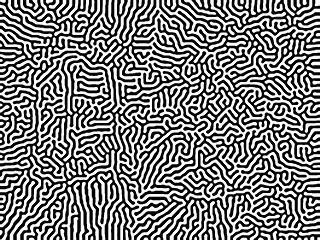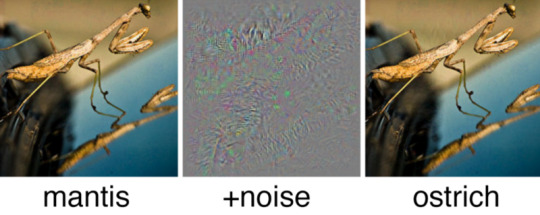Don't wanna be here? Send us removal request.
Text
Read: Ursula K. Le Guin - The Word For World is Forest

Only my second Le Guin book after The Left Hand of Darkness, this is a later episode from the same universe, and a painful reminder that Avatar could have been a good film.
It seems a lot less subtle and delicate than The Left Hand of Darkness, the humans, at times, appear almost as parodies of themselves, which, in a way, I suppose they can be. That also may be due to the fact that it’s also a very short book (took me a single evening to read) and there wasn’t that much room to get the point across. I still find it odd that this came seven years after The Left Hand of Darkness though.
Checking up on the publishing dates on Wikipedia, I realised that there are actually a lot more books set in this same universe (the Hainish Cycle), so I suppose The Dispossessed is up next.
Why is this on here? Well, it’s about several problematic systems, covering unsustainable resource use and ignorance of ecological interdependencies, colonialism, toxic masculinity and sexism. The treatment is a bit on the nose at times, but considering the state of mainstream discourse 42 years ago, that may have been a deliberate choice.
Anyway: recommended.
1 note
·
View note
Video
vimeo
Weird animation is one of my squishy jams. Charles Huettner, who’s animation style is so wonderfully… spongy? Rubbery? Expandolicious? Boingly? Anyway, he worked on this a while ago, and it’s fantastic. Wordless, playful, melancholic, and utterly strange.
1 note
·
View note
Text
Long-lost diffusion
One thing I loved doing as a kid is plugging a video camera directly into the TV and then filming the TV, which caused amazing visual feedback cascades. Years ago, I came across the artist Ethan Turpin, who had improved the technique somewhat. He’d found that by increasing the contrast, he could use this specific camcorder’s characteristics to generate an effect that looks almost organic, and indeed, the exhibition this was shown in included corals with patterns that look remarkably similar.
vimeo
And this is where Things Become Connected In Interesting Ways. In the sciences, reaction diffusion systems (which apparently go back to Turing) can be used to generate patterns, or describe chemical reactions, or simulate the spread of epidemics or growth of tumors. Their output can be startlingly similar to the feedback effects Turpin produces. But I didn’t know this then.
It turns out that, like cellular automation, reaction-diffusion is a popular exercise for graphics programmers, and can even be generates manually, by repeatedly sharpening and blurring an image. Reaction-diffusion uses convolution, which, for each cell or pixel, takes weighted averages of the brightness or colour (or other characteristics, such as the concentration of a chemical) of the surrounding cells or pixels. Sharpening or blurring work in the same way, to blur a pixel you take it and its eight neighbours and multiply each of their colour values by 1/9th (vastly simplyfied, presumably). The result is something like this:

But back to the programmers. Years ago, I stumbled across a gif of a Flash film by a Japanese artist, Qubibi, which has been floating around in the back of my mind/hard drive since 2011:

I was smitten. I wanted to find out how to do this, but didn’t even know what to google for, and so eventually, I forgot about it. Until a few days ago, when somebody posted this on Twitter:

And now I know. It’s wonderful when the web does what it’s supposed to and actually connects things.
1 note
·
View note
Text
Three Things
One. David Banks for The Baffler (routinely interesting and thought provoking) on authoritarian tendencies in the discipline and culture of engineering. As someone with a humanities degree who ended up in a very technical job (although I wouldn’t call myself an engineer for a variety of reasons), this certainly resonated with me. The piece takes no prisoners and strikes right, left and center, and made me sufficiently uncomfortable in the process. A timely reminder that the invisible hand of technology is just as useless and intrinsically destructive as that of the market.
Read Engineered for Dystopia
Two. Religious overtones usually trigger my flight reflex, but Anthony Oliveira’s The Year of Apocalypses smartly uses them as both as leitmotif and thematic bracket. It’s a cathartically thorny recap of 2017 that begins with Trump’s decision to relocate the US embassy to Jerusalem as a “theological dog-whistle to his evangelical base”, a starting gun for the climax of history.
In ages of amnesia and rewritten history, one of the most radical acts of political defiance is to remember, and to archive: shoring fragments against a ruin. “This is not normal” has become a way for us, in the midst of our powerlessness, to at least leave some spoken or written record of the indignities and injustices we have been forced to witness.
By no means a happy read, but full of interesting impulses nonetheless.
Three. Duke, by Cate Le Bon.
On Market Square, we were carried away We studied entire empires when you were Duke We landscaped our legacies and thought about wars
0 notes
Text
In your face design
46% of the 1,040 respondents said they had used their nose as an “input device.” Another 28% said they hadn’t tried it, but wanted to give the nose tap a shot. Residents in colder climates were more likely to say they nose tap, because they are often bundled in gloves and coats.
Source
So much effort went into designing Siri, Cortana and all the others, to help tech dematerialise and make manual interaction less necessary, and yet…
0 notes
Text
Advertising is destroying democracy
When journalism is financed by ads, journalists will write whatever creates the most clicks. So far, so obvious:
In his book Trust me, I’m Lying: Confessions of a Media Manipulator, marketer Ryan Holiday describes how online journalism is broken. His diagnosis? Most online media outlets make money by selling ads. In general, the more traffic they have, the more ads they sell. But this makes online journalists prisoners of a system that expects them to generate traffic. They are victims of the trade, paid to write articles that create clicks.
Source
This becomes especially interesting in the context of political (with air quotes) journalism, where the most outrageous candidates more or less automatically get the most airtime, in essence promoting them and their cause over others, for free:
The CEO of CBS recently told investors that Donald Trump’s bigotry is “phenomenal” for advertising revenue, and he hopes Trump keeps escalating. “Go Donald”
Source
It’s the Clickbaitisation of politics, a constant ”You won’t believe the insulting things this candidate said today!” that reduces the incentive to write about anything and anyone substantial, and increases the incentive to go for whatever attracts the most attention. And this is a win-win for both parties: the most outrageous politician, and the most superficial news outlets. Both feed off each other’s energy in a way that guarantees that both systems, politics and journalism, end up losing.
1 note
·
View note
Text
It is night at the North Pole in the middle of winter, and the temperature is above freezing.
This really shouldn’t be happening.
2 notes
·
View notes
Photo

Ten-lane highways in Myanmar’s artificial capital city, Naypyidaw, built for an automobile future it will most likely never see.
0 notes
Text
Infinite storage
It is now probably cheaper to put your extra belongings in a shipping container and have them continuously sail around the world than storing them at a self-storage provider near you.
0 notes
Text
Amateur Steganographer
Steganography is, broadly speaking, the practice of encoding secret data within an image without making any obvious, visible changes to it. The observing human sees an innocuous photograph, a computer however can see the underlying data layer.
Adversarial images, in a way, do the opposite: they encode an additional layer of data into an image, so that it appears unchanged to the human eye, but conveys an altogether different message to any casually observing machine.

This has a number of entertaining/useful applications that might be used to defeat face detection mechanisms. A friendly ”Make humans look like cats to machines” button integrated into a photo upload service. The digital equivalent of anti-face-detection makeup.
In an age where automatic data retention piles up more petabytes than any human could ever sensibly sift through, this might be a good way to hide in plain sight when the machines inevitably rise up against us.
0 notes